Viking Food: Facts and eating habits
In the Viking Age, people had two meals a day: dagverðr in the middle of the morning and náttverðr in the evening. Their daily menu consisted mainly of groats and boiled cereals, bread and dairy products.
Meat and fish had to be exceptional dishes, although fish was a major staple in Northern Scandinavia where the climate made cultivation and hunting difficult. The diet had to vary from one region to another in the northern world, as the food consumed was closely linked to the resources available near the habitat, except for some of them that were imported.
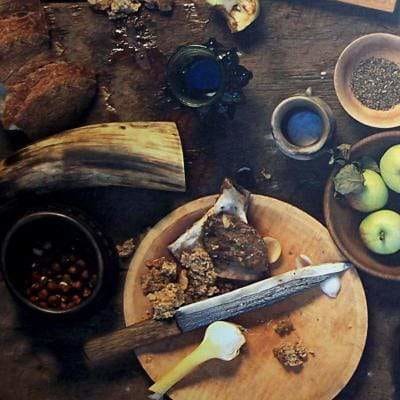
Food habits and customs did not remain fixed throughout the Viking Age. The food and the way food was cooked necessarily evolved over time, from the knowledge acquired and from the multiple contacts that the Vikings established through their travels with the other cultures of the time.
CEREALS AND GRAINS
Rye (Finland, Sweden and Denmark late)
Barley
Oats
Spelt
Rice (imported from Italy)
More rarely millet, buckwheat, wheat
Linseed, hemp and rape seed
Flours were generally made from at least two types of grain, one of which was almost always barley. Breads also frequently contained spelt, flax or pea flour, sometimes oat flour. Rye became the main cereal for bread in southern Scandinavia during the Viking period.
Breads were generally small, thin and flat, similar to cookies. They could be pierced in the center to hang from a wooden rope or bar, which protected them from rodents.
Bread was baked on heated stones or on an iron plate over the fire. Bread ovens were not widespread, and some researchers believe that baking sourdough bread in the oven only developed with the growing cultivation of rye.
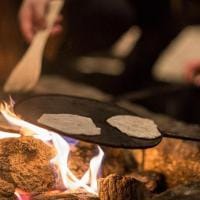
The seeds were used to produce oils (Jorvik, Dublin), such as linseed oil, hempseed oil and rapeseed oil.
DAIRY PRODUCTS
Cow, sheep and goat milk
Curdled milk
Butter
Buttermilk
Skyr (produced with yoghurt and cottage cheese)
Cheese (generally very salty to be able to preserve it)
Milk, most often from cows, but also from goats, was generally not consumed as such but rather considered as a raw material to create other dairy products that could be stored and consumed during the winter period (a period when there was no milk production).

Skyr is an Icelandic dairy speciality of the same family as yoghurt although technically closer to a very fresh cheese, with a slightly acidic taste and a sweet aftertaste. Its recipe is said to have been imported from Norway to Iceland by the Vikings, but nowadays skyr is only consumed in Iceland.
MEATS
Chicken, duck, goose
Goat, sheep, lamb
Beef, cow, veal
Pork
Horse
Game and wild birds
Whale, walrus, porpoise, seal
Pig farming was predominant in the settlements and heavily populated areas because these animals were used to recycle food waste and could be kept in pens.
The breeding of poultry (chicken, duck, goose) provided eggs and meat throughout the year.
Cattle breeding was important. Some barns on Viking Age farms could hold up to 80 to 100 heads of cattle, essential for the production of dairy products that were even more prized than the meat itself.
Meat was a seasonal product: slaughter occurred mainly at the end of the grazing season for cattle, in October for sheep, and in November-December for pigs. In this way, farmers avoided having to feed them during the winter, and could better manage the stock of hay harvested during the summer.

Meat from hunting (deer, elk, reindeer, hare, bear, wild boar, squirrel) was not widely consumed, except in the northernmost parts of Norway and Sweden. Hunting also involved wild birds (golden plover, black plover, grouse, pigeon, lapwing, wild goose), seabirds and their eggs, seals, walruses and whales.
The different methods of preserving meat were drying and smoking (the most common), fermentation (the unopened animal is usually placed in a pit away from the air so that the meat ferments), marinating in wheat, brining and salting.
SEAFOOD
Cod, salmon, herring, haddock, ling, horse mackerel, smelt, saithe
Eel, bream, pike, roach, roach, perch, rotengle
Oysters, cockles, mussels, periwinkles, scallops, shrimp
Edible Algae
These include fish, crustaceans, shellfish and algae.
Dulse (Palmaria palmata) belongs to the red algae family. It is a fine seaweed with a mild flavor still eaten as is in Ireland, Scotland, and especially in Iceland. Easy to harvest from the shore, dried and stored for long periods, it is an excellent source of many vitamins and minerals.
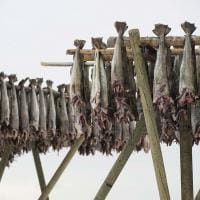
The fish, which were probably the most widely consumed, were mainly preserved by smoking and drying in the open air (stockfisch).
VEGETABLES AND PLANTS
Mushrooms
Wild carrot, parsnip, turnip, celery, wild celery, radish, sorrel, lamb's-quarters (eaten like spinach), dandelion,
Cabbage, endive (Island of Funden)
Beans, peas
Onion, rocambole garlic and common garlic
Beets, mushrooms, leeks and onions can be added to this list.
In addition to cultivated vegetables, wild plants such as nettle, sorrel, watercress and lamb's-quarters could be harvested.

Vegetables were usually preserved by drying.
HERBS AND SPICES
Dill, coriander, hops, fennel, watercress, horseradish, lovage, mountain fennel, parsley, mint, thyme, marjoram, angelica officinalis, yarrow yarrow.
Poppy seeds, mustard, black mustard (or black mustard), caraway or meadow cumin, juniper berries
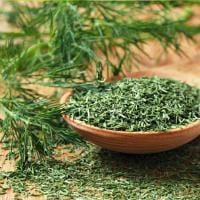
The Vikings also had access, through the trading posts, to exotic spices such as cumin, pepper, saffron, ginger, cardamom, maniguette, cloves, nutmeg, mace, cinnamon, aniseed, and bay leaves.
Vinegar should be added to this list of condiments known at the time.
FRUITS AND NUTS
Blackberries, blueberries, raspberries, wild strawberries, cherries
Apples (attested in particular by a discovery in the Oseberg burial site)
Mountain ash berries, sloe berries, elderberries, hawthorn berries
Hazelnuts, walnuts and by import almonds, chestnuts
Figs and grapes (attested by archaeological discoveries in specific contexts)
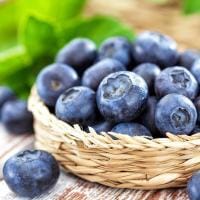
In northern Germany and southern Denmark, archaeologists have also discovered peach pits, which were probably brought back during a trip.
The fruits were usually preserved by drying, and sometimes in honey, the only available sweetener.
DRINKS
Drinking alcoholic beverages played an important cultural role in the Nordic culture, and Scandinavian peoples were keenly aware of the risks and hazards of drunkenness, as the written sources testify. Beer was by far the most commonly consumed drink, even from a very young age.MEAD
Mead (mjöðr in Old Norse) is one of the oldest alcoholic drinks in Scandinavia and as the nectar of the gods cited in Nordic mythology, the most emblematic.
In the sagas, mead is the drink of poets and of eloquence. The serving of mead is illustrated in literature as both the duty and the privilege of kings.

Unlike modern beehives with removable wooden frames, Viking Age hives were straw domes - which are still the origin of our iconographic representation of the hive today. This meant that bee colonies had to be decimated in order to collect wax and honey, either by smothering by burning a blown wick or by drowning.
BEER
The main staple cereal grown during the Viking era was barley, and it may even have been the only cereal grown in Iceland until the short ice age of the fourteenth century made it completely impossible to grow cereals.

Barley was used to brew beer, which was the basic drink of all social classes. Even children drank beer on a daily basis, especially in the most densely populated areas.
WINE
Wine is the most sought-after but most expensive fermented drink in Scandinavia.
Grape wine was mainly imported from the Rhineland to Denmark, using the trading posts in Dorestad and Hedeby (Haithabu). As a result, wine was reserved for the rich and powerful.
Two grape seeds dating from the late Iron Age and the Viking Age that were discovered in 2017 at the aristocratic site of Tissø (Seeland Island, Denmark) indicate that the Vikings probably cultivated vines locally. The conditions for wine production in the Viking Age, and possibly as early as the Iron Age, were present:
The Vikings were able to acquire the knowledge necessary for winemaking during their travels in France and England.
The Vikings had a strong taste for alcoholic beverages.
The climate at these latitudes was similar to ours thanks to the medieval climate optimum.
Producing wine would have been an ostentatious symbol of power for a notable of the Viking Age.
Scientists are not yet able to determine whether viticulture was used to consume fresh grapes, to produce raisins as food for long sea voyages or to make wine.
A very small quantity of fruit wines was reserved exclusively for sacramental use.


